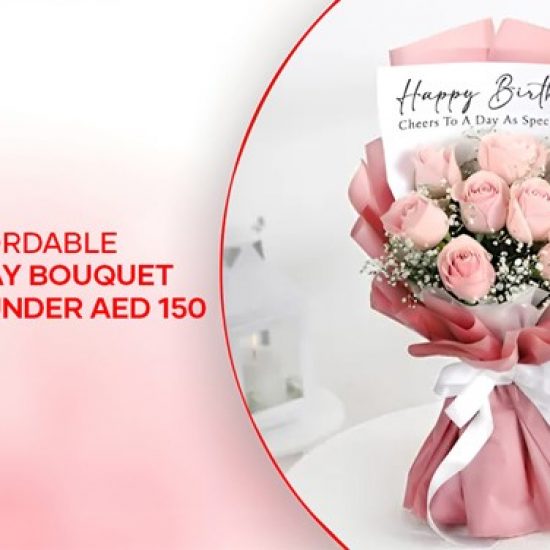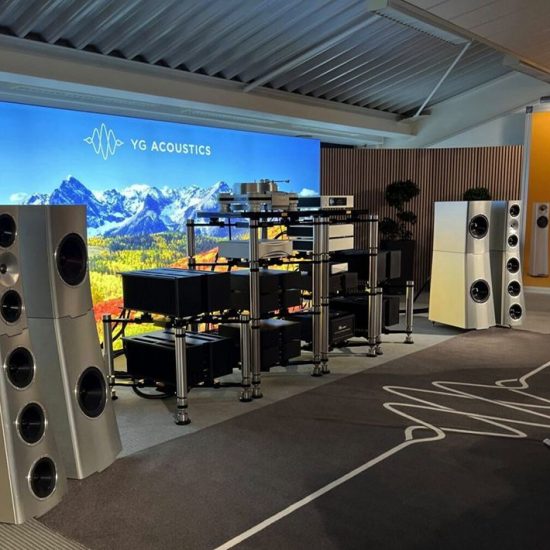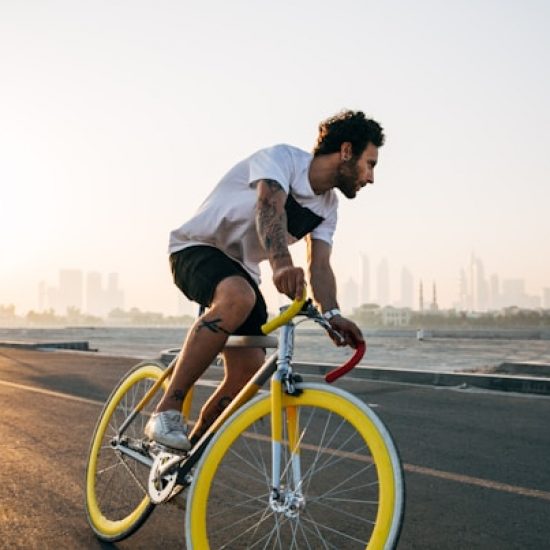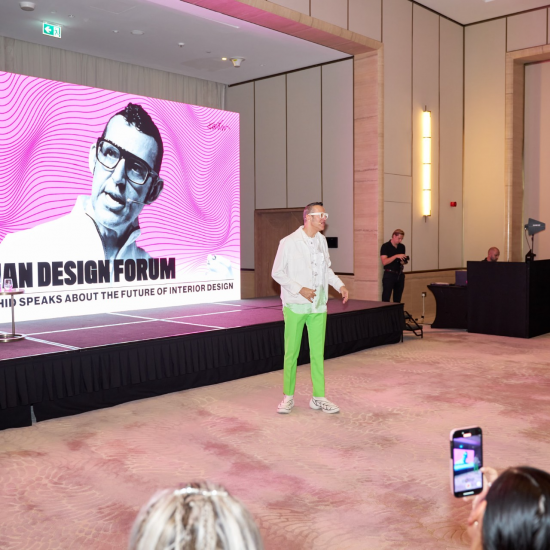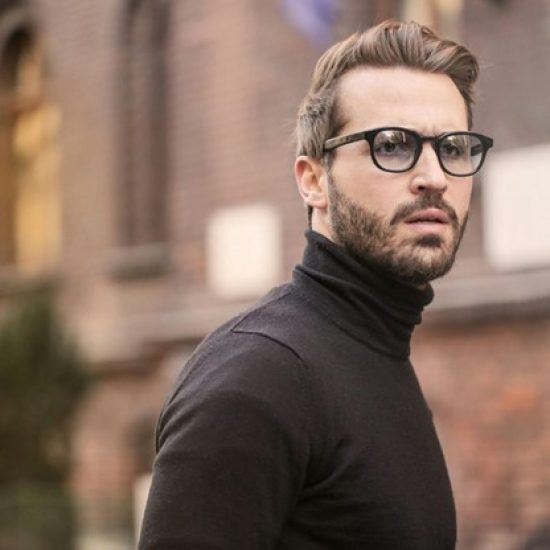
As the UAE Pavilion was readied for the opening of the Venice Biennale, paper aeroplanes were strewn across a brick floor with yellow markings.
To the untrained eye, they might have looked like the result of some celebratory fun and games from the young members of staff who had just finished the week-long installation work at the Sale d’Armi (Weapons Room) in the Italian city’s old fort, the Arsenale, ahead of the start of the Biennale last Saturday.
But the planes are a part of Rock, Paper, Scissors: Positions in Play, the exhibition hosted by the UAE Pavilion, as are the bricks daubed with yellow paint.
Five artists are featured at this year’s pavilion: Nujoom Alghanem, Sara Al Haddad, Vikram Divecha, Lantian Xie and Dr Mohamed Yousif. Curator Hammad Nasar says that in the past 10 years, both in and outside the UAE, he has observed a sense of playfulness in older artists like Hassan Sharif and Mohammed Kazem, as well as in the younger generation who are also exhibiting in Venice.
When he started planning the exhibition, he asked himself two questions.
“Where is this play coming from and how is it nurtured, because play in the UAE is not the first thing that you’re thinking about,” says Nasar. “And why are people doing it?”
He reached one early conclusion: “Play is part and parcel of making a place home.”
That statement was echoed by Sheikh Nahyan bin Mubarak Al Nahyan, Minister of Culture and Knowledge Development, who said, “such effective participations create cultural interactions between artists from different backgrounds, allowing them to be part of the global cultural movement”.
Behind Nasar in the gallery, there is a row of oars arranged in a wavelike pattern. It is the work of Yousif, who trained as a sculptor and then spent years in the theatre. Nautical imagery is nothing unusual in the UAE, although this work features neither ship nor sailors.
Nasar translates an inscription that appears in Arabic: “The rhythm of the oars under the water.” Oarsmen traditionally sing when they row, and the oars arranged by Yousif, says Nasar, “looked like musical notation”.
Music or not, rowing is hard work, but soon enough, we were back on the subject of play.
“Let’s use a surfing metaphor,” Nasar says. “The best way to use a wave is to ride it. Play has that element: you ride what life throws at you. He’s doing sculpture in which the body is absent – but completely there.”
A few steps away, the small courtyard of bricks with the yellow paint is another “playground”, titled Degenerative Disarrangement.
The artist, Divecha, brought the bricks from Dubai, where they had been discarded after road workers repaired a bus stop.
The project was first shown in Sharjah in 2013. Divecha shipped all four tonnes to Venice then rearranged them in a different, random order.
He and Nasar suggest that using the bricks in a work of art allocates a different value to them from their normal, everyday use. The paper planes, which visitors are encouraged to throw from a platform, feature a text from NYU Abu Dhabi-based creative writer Deepak Unnikrishnan playing on the notion of the “Gulf Return” that South Asians bring home with them after working as expatriates in countries such the UAE. The works become symbols of what Divecha calls “Venice Return”. “It will go back [to the UAE] in November with this new value accrued by entering a far more important art circuit,” he says.
Divecha also plays with public expectations in another work, Bathing Boulders, for which he took rocks to be placed in a temporary sculpture garden and washed them with water.
They have since been reduced to rubble for road works and other construction projects, but videos of the rocks being gently cleaned are now on view.
Nothing could be further removed from the harsh texture of stone than the pinkish-yarn wrapped around one of the pavilion’s upright iron support beams. This is can’t you see how i feel, a work by Al Haddad.
“She occupies time and space through elements of surreptitious performance,” says Nasar. “There is something playful and subversive about taking something so masculine… like black steel, and wrapping it in girlie pink.”
Standing in the gallery, which is demarcated by black beams, Al Haddad says: “Basically, an interruption was needed. I love pink. People look at it as a feminine colour but to me it’s more empowering. It’s one of these things that you just want to hug.”
As Nasar notes, artists rarely create work in a vacuum, and the UAE artists featured in Rock, Paper, Scissors have company elsewhere in the Biennale.
On the grandest of scales, the sense of playfulness towers over anyone who visits the Palazzo Grassi on the Grand Canal to see Damien Hirst’s Treasures from the Wreck of the Unbelievable, a fictional treasure trove from an invented civilisation discovered in an pretend archaeological expedition.
The faux-bronze figure “saved from the deep” that fills the atrium of the Palazzo Grassi is about 18 metres tall. Hirst’s fantasy of jewelled fragments of treasure lost and rediscovered is not part of the Biennale’s official programme – it opened last month to pre-empt any competition for press coverage – but it is a key attraction nonetheless.
Visitors are flocking to see it, as they are to the Austrian Pavilion in the Biennale’s Gardens (Giardini), where a large lorry stands vertically on its front bumper, as if it has fallen from the sky.
Somehow the vehicle, shipped in from Russia, avoided any damage in its imagined plunge – unless you count the hollowing-out of its interior by the sculptor Erwin Wurm to make space for a stairway that takes you to a viewing platform at the truck’s rear end, elevated about eight metres in the air.
On a somewhat smaller scale, in galleries across a path through the historic Arsenale, other whimsical experiments take up the theme of play in a vast exhibition called Viva Arte Viva.
Echoing Al Haddad’s fabrics are ladders and lattices of cloth, about 12 metres long, by Portuguese artist Leonor Antunes, that hang from the ceiling and form a line that sways slightly with the movement of the crowd. They are pure lyricism as they define and divide the space from above.
For some playful satire, one need look no further than Acqua Alta (High Water), a nearby pile of 6,000 printouts of Instagram photographs of Venice, assembled by French artist Michel Blazy. Controlled drops of water also fall one by one from the ceiling.
As passers-by looked up on the exhibition’s opening day, Blazy was on hand to scrub the water off, also scrubbing off parts of the Instagram images. Was the water slowly erasing memories – or posing even more of an existential threat?
“In Venice, we feel the power of time at every level,” says the artist. “We have the long history of Venice, and then we have the risk from the water around it that threatens to flood Venice at any moment.”
Blazy, a bushy-headed man in his 50s, has another installation nearby. It is a wall of scaffolding on which training shoes are placed, as if in a shoe store – only each shoe is filled with green plants.
It is a playful jab at any assumptions about the august, self-important nature of art – and a reminder that art can be made with virtually anything.
• The Venice Biennale runs until November 26. For more details, visit www.labiennale.org


